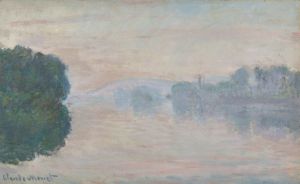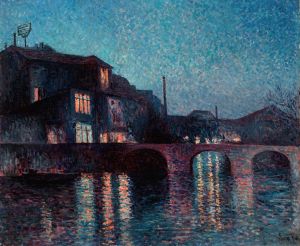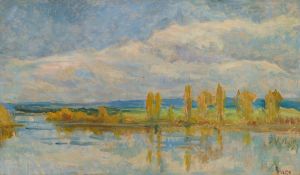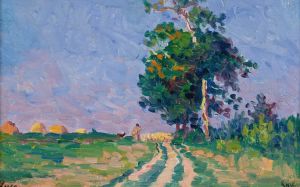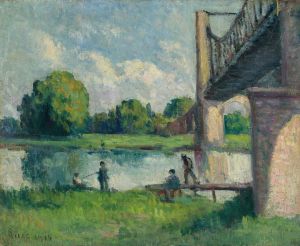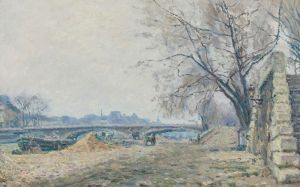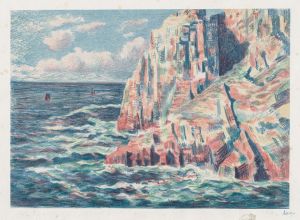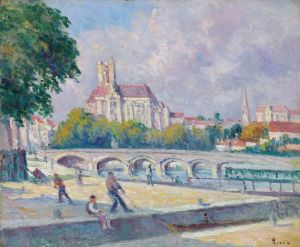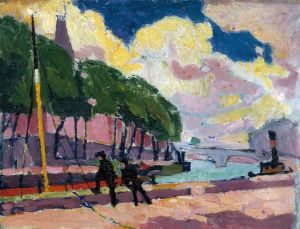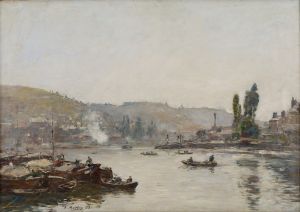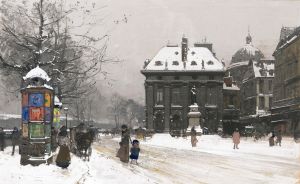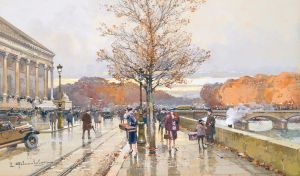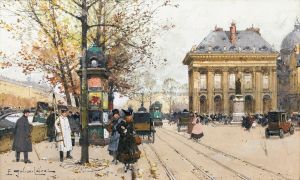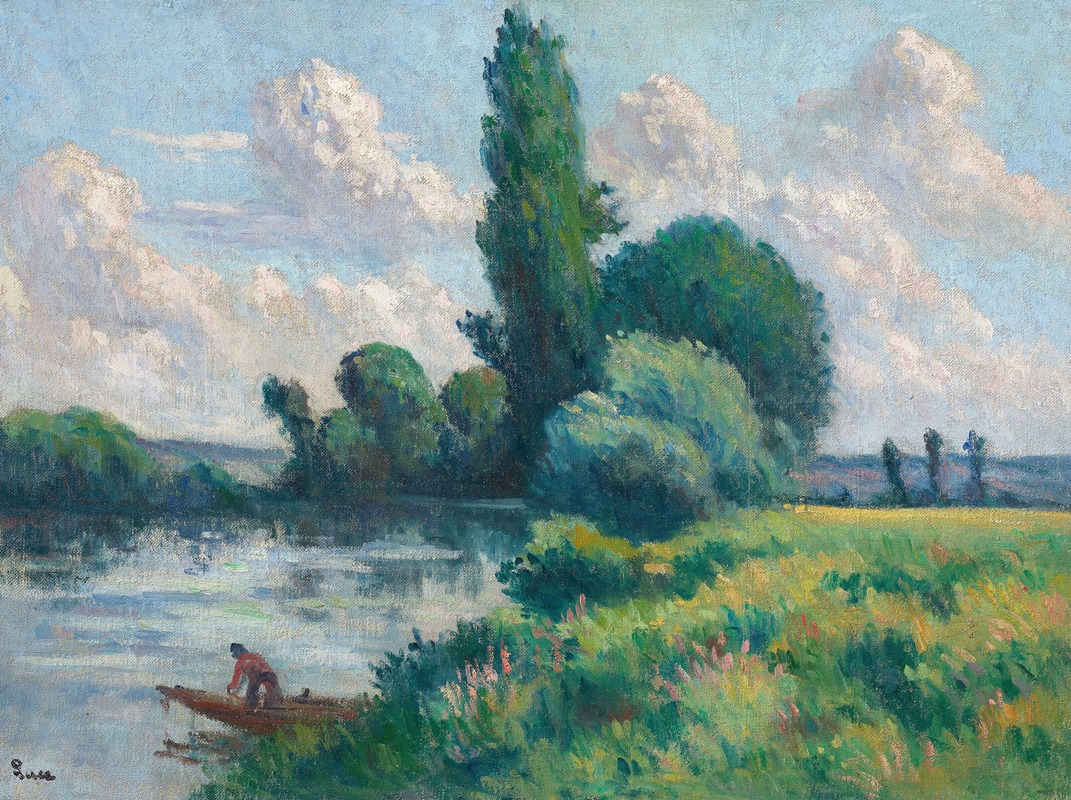
Rolleboise, Le petit bras de Seine
A hand-painted replica of Maximilien Luce’s masterpiece Rolleboise, Le petit bras de Seine, meticulously crafted by professional artists to capture the true essence of the original. Each piece is created with museum-quality canvas and rare mineral pigments, carefully painted by experienced artists with delicate brushstrokes and rich, layered colors to perfectly recreate the texture of the original artwork. Unlike machine-printed reproductions, this hand-painted version brings the painting to life, infused with the artist’s emotions and skill in every stroke. Whether for personal collection or home decoration, it instantly elevates the artistic atmosphere of any space.
Maximilien Luce was a prominent French Neo-Impressionist artist known for his contributions to the Pointillist movement, which was characterized by the use of small, distinct dots of color applied in patterns to form an image. One of his notable works is "Rolleboise, Le petit bras de Seine," which reflects his mastery in capturing the serene and picturesque landscapes of France.
Luce was born on March 13, 1858, in Paris, France. He initially trained as an engraver before turning to painting, and he became associated with the Neo-Impressionist movement in the late 19th century. This movement was pioneered by artists such as Georges Seurat and Paul Signac, who sought to bring a scientific approach to the use of color and light in painting. Luce adopted their technique of Pointillism, which involved applying paint in small dots and allowing the viewer's eye to blend the colors optically.
"Rolleboise, Le petit bras de Seine" is a landscape painting that exemplifies Luce's skill in this technique. The painting depicts a tranquil scene along the Seine River, near the village of Rolleboise. This area, located in the Île-de-France region, was a popular subject for many artists due to its natural beauty and the quality of light that played across the water and landscape. Luce's choice of this location reflects his interest in capturing the essence of rural France and the interplay of light and color in natural settings.
In this work, Luce employs a palette of soft, harmonious colors to convey the peaceful atmosphere of the river scene. The use of Pointillism is evident in the way he applies small, distinct dots of paint to build up the forms and textures of the landscape. The technique allows for a vibrant interplay of colors, as the juxtaposition of different hues creates a shimmering effect that mimics the natural light reflecting off the water.
Luce's attention to detail and his ability to convey the mood of a scene are evident in "Rolleboise, Le petit bras de Seine." The painting captures the quiet beauty of the Seine River, with its gentle flow and the lush greenery of the surrounding landscape. The composition is balanced and harmonious, inviting the viewer to linger and appreciate the subtle nuances of color and light.
Throughout his career, Luce remained committed to the principles of Neo-Impressionism, and his works often focused on themes of nature, urban life, and the human condition. He was also known for his political activism and his involvement with anarchist movements, which sometimes influenced the subject matter of his paintings. However, in "Rolleboise, Le petit bras de Seine," the focus is purely on the aesthetic and the artist's appreciation for the natural world.
Maximilien Luce continued to paint and exhibit his works until his death on February 6, 1941. His contributions to the Neo-Impressionist movement and his distinctive style have left a lasting impact on the art world. "Rolleboise, Le petit bras de Seine" remains a testament to his skill as a painter and his ability to capture the beauty of the French landscape through the innovative use of color and technique.





